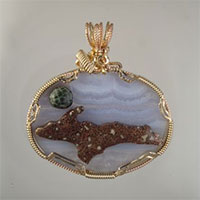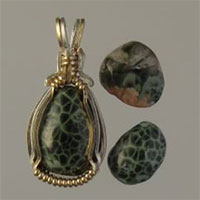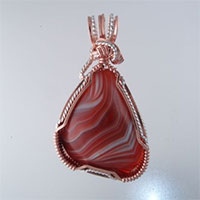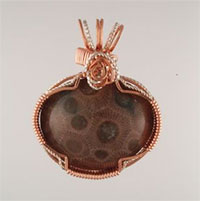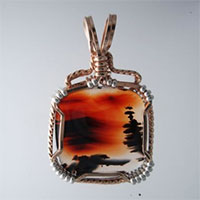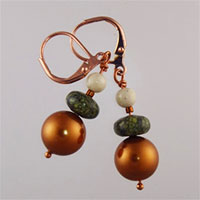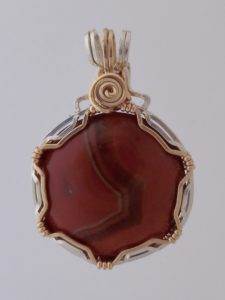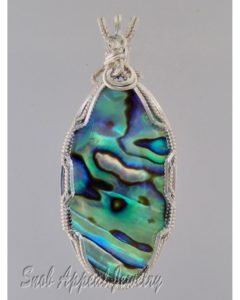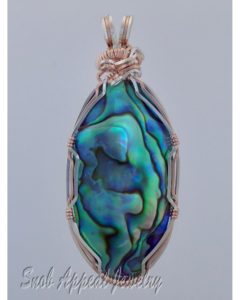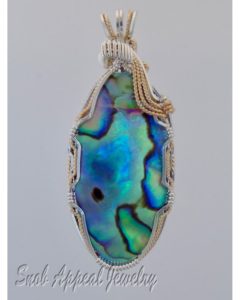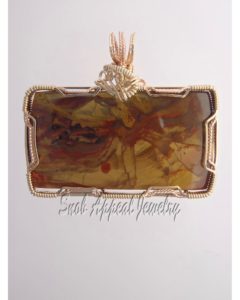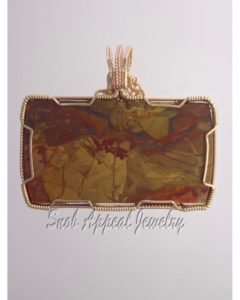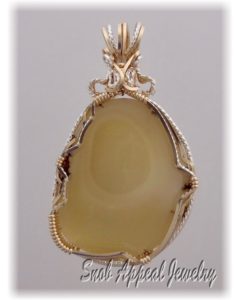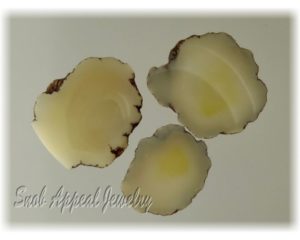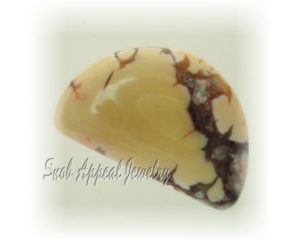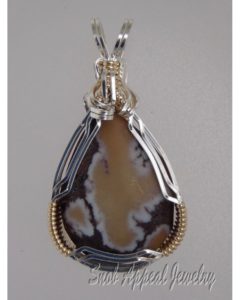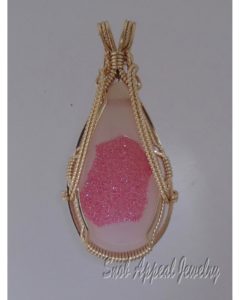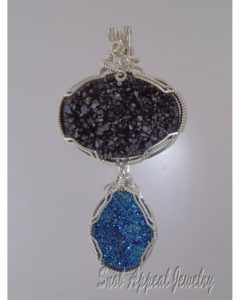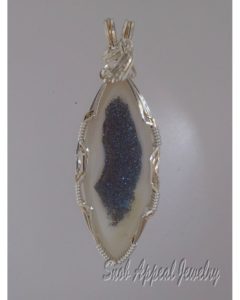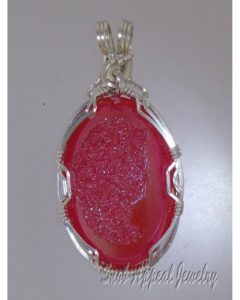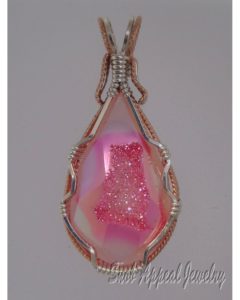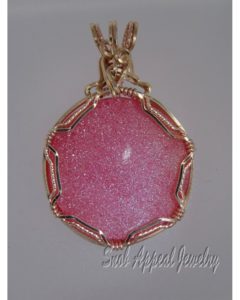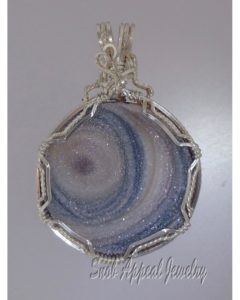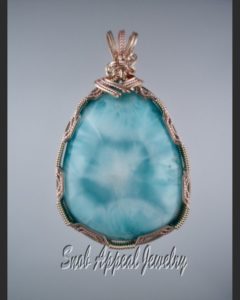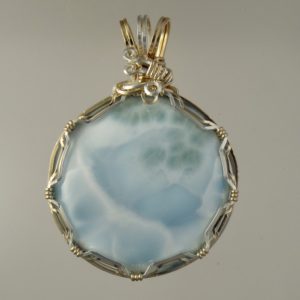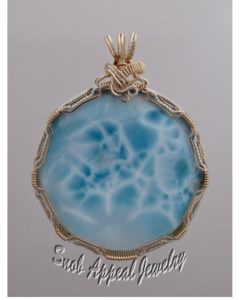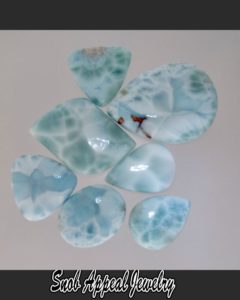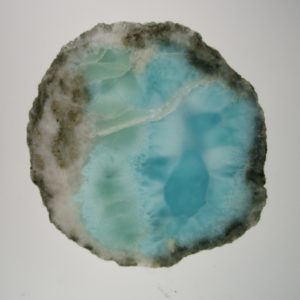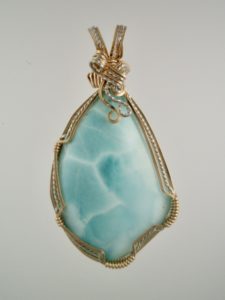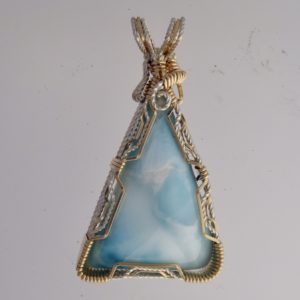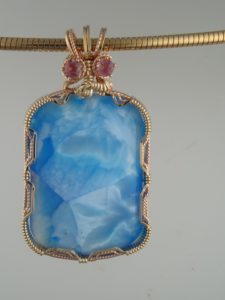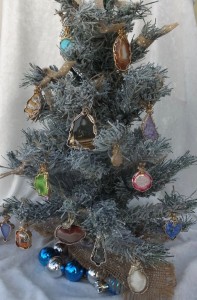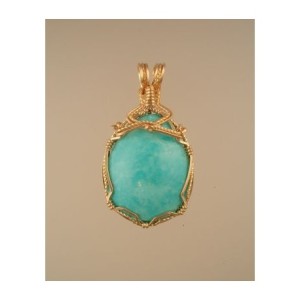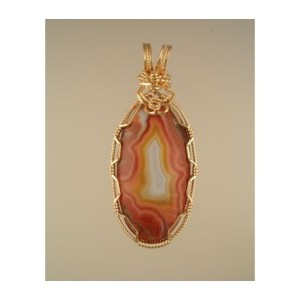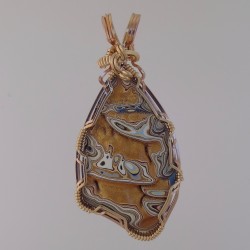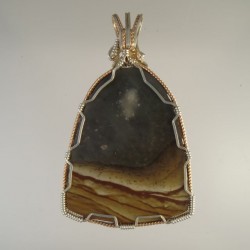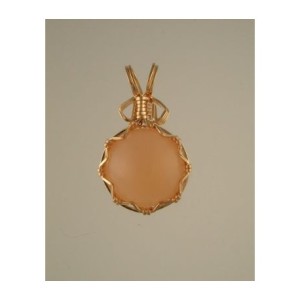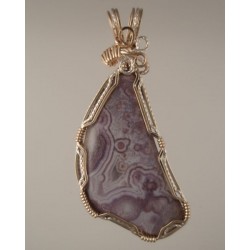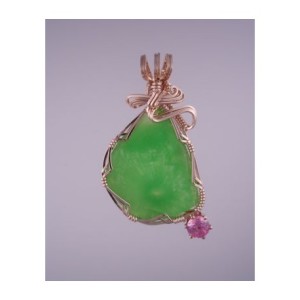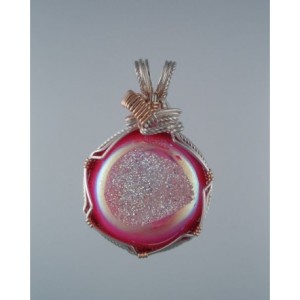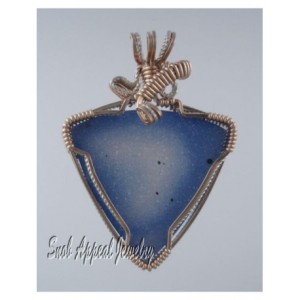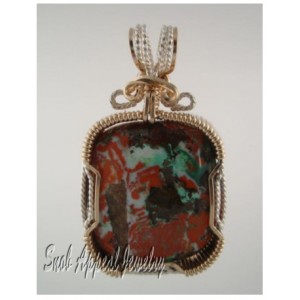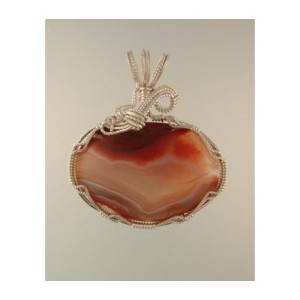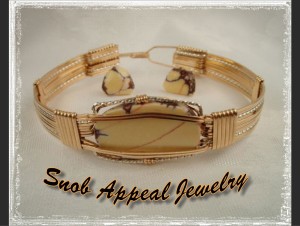
I tried to do justice to a customer’s Yellow Keweenaw Point Datolite. earring and bracelet set.
You already know that Datolite is my favorite Calcium-Borosililicate. I just love the way that flows off the tougue, and it sort of makes you look smart when you say it. Datolite commonly occurs in the the Keweenaw in the Copper deposit host rocks in veins and vesicles. We also find Datolite in mine waste piles, often in the form of round, Califlower-looking crystals that have popped out of the host rocks left from mining Copper. If you find Datolite in the Keweenaw, you can be assured there is copper nearby..
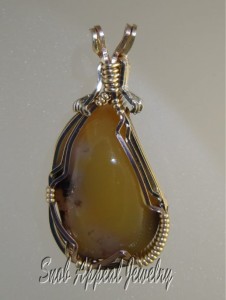
Quincy Yellow
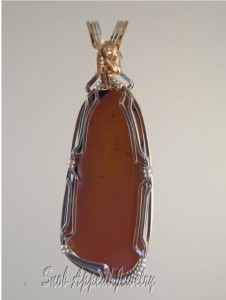
Franklin or Mesnard (?)
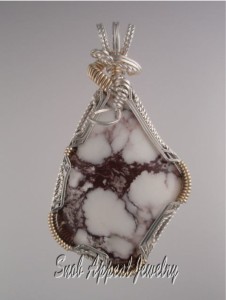
White Datolite can be from anywhere. This one containing classic Datolite Crystals.
The most common color of Datolite is white, and can be found in all the copper deposits in the Keweenaw. Pink is the second most common color. A close microscopic study of pink Datolite will reveal the pink hue is the result of micro copper within the stone. the darker the pink, the more copper in the Datolite.
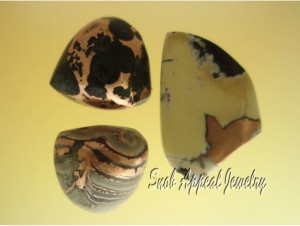
Copper is the star in these three I’ve been saving for a personal piece of jewelry. From right clockwise: Keweenaw point Yellow Datolite, Copper Replacement Agate (Kearsarge Lode), Dark Chlorastrolite with Copper.
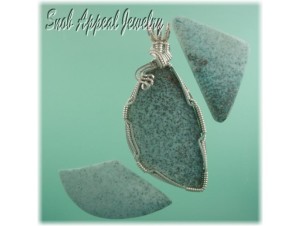
Centennial Blue (#2 Shaft)
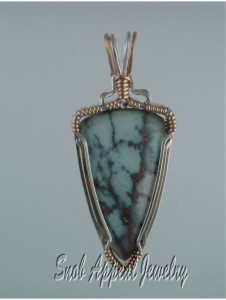
Copper “Lightning” in Centennial Blue
Colors in Datolite run the entire color palette. Impossibly rare is the Canary Yellow from the Keweenaw Point. Unlike most Datolite in the Keweenaw this yellow Datolite gets its’ color from manganese and not Copper. This Point deposit is primarily under water, but has been covered with green algae for quite a few years now, making it almost impossible to find in the host basalt.
Most mines, where Datolite occurs, sport particular colors in their respective Datolites. I, and many other serious Datolite hunters can make educated guesses as to where a particular Datolite might have come from. I find my friend Jeff Anderson’s website the go-to site for Datolite ID. Check it out at http://www.sailorenergy.net/Minerals/MLDatolites/MineralMainDatolitesMI.html
Another rare Datolite is the Centenial, a white Datolite stained blue-green from oxidized copper. Several hundred pounds were removed, from a muddy pocket deep in the mine, in 1962 by miners. This was all that were found, and after the mine was closed, it flooded. If you have one of these “Tidy-Bowl” colored beauties, you are fortunate indeed. All Centennial’s were either full of copper flecks, or had less copper, making them lighter blue. Some blues came from other areas, like the Phoenix Mine (Phoenix), and the Isle Royal Mine (Keweenaw County). Even though blues are found in other locales, the best blues have always been from the Centennial.
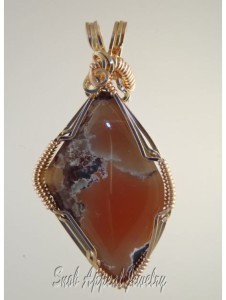
Mesnard in the classic colors Mesnard is famous for.
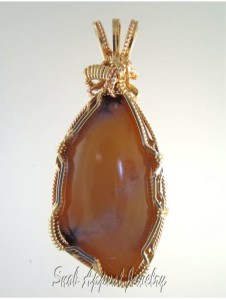
Quincy Caramel!
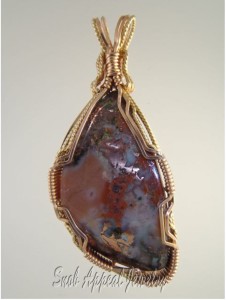
Caledonia Mine. The red is Microcline (var Adularia)
Beautiful and striking Datolite colorations came out of the Mesnard, Franklin, and the Quincy. These three mines were eventually tied together by adits. The Orange/pink/red combinations are amazing from the Franklin and the Mesnard, as is the caramel Yellow’s from the Quincy.
Datolites of all colors were prolific at the Delaware and Connecticut Mines over the years. Many of the mine waste piles, including the Delaware, have been crushed in the last few years for road fill. Finding any Copper Country mineral is not as easy as in years past, mostly because of the incessant crushing of the old mine waste piles.
Bonnie found a wonderful bag of Datolites, I obtained several years ago, in my shop. I thought you would enjoy what I’ve been doing with them.
My Datolite jewelry is very popular at Copper World in Calumet, on our website, or see us every year in August at art shows in Eagle Harbor and Copper Harbor where you can choose your jewelry (Including Datolites) in person. All the types of Datolite’s mentioned in this blog are still available from us, but are becoming depleted as people realize if they don’t get one know, they may never get the ones they want.


